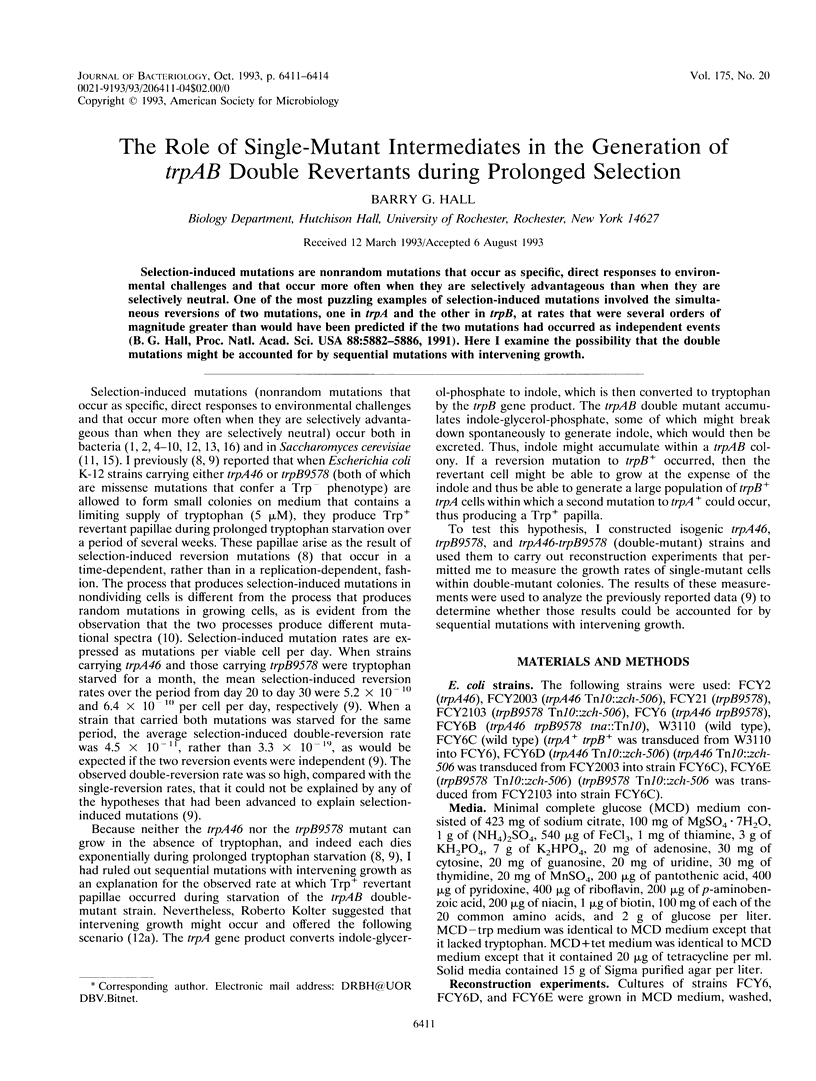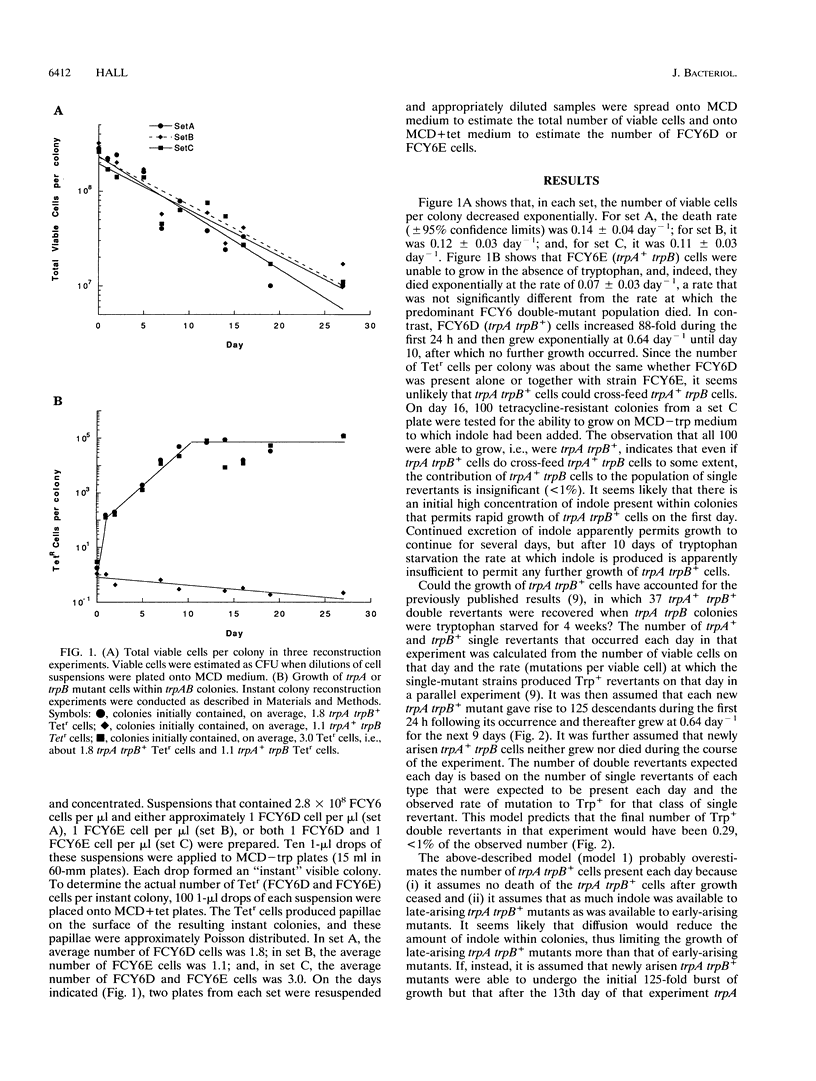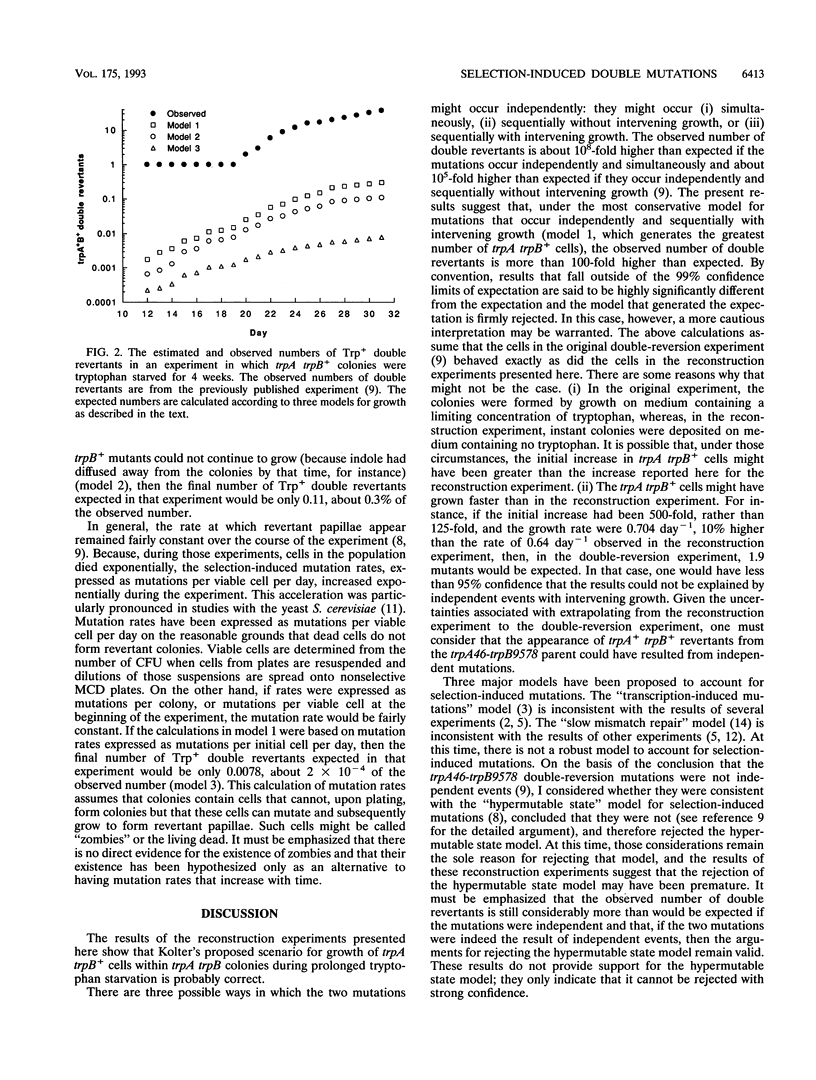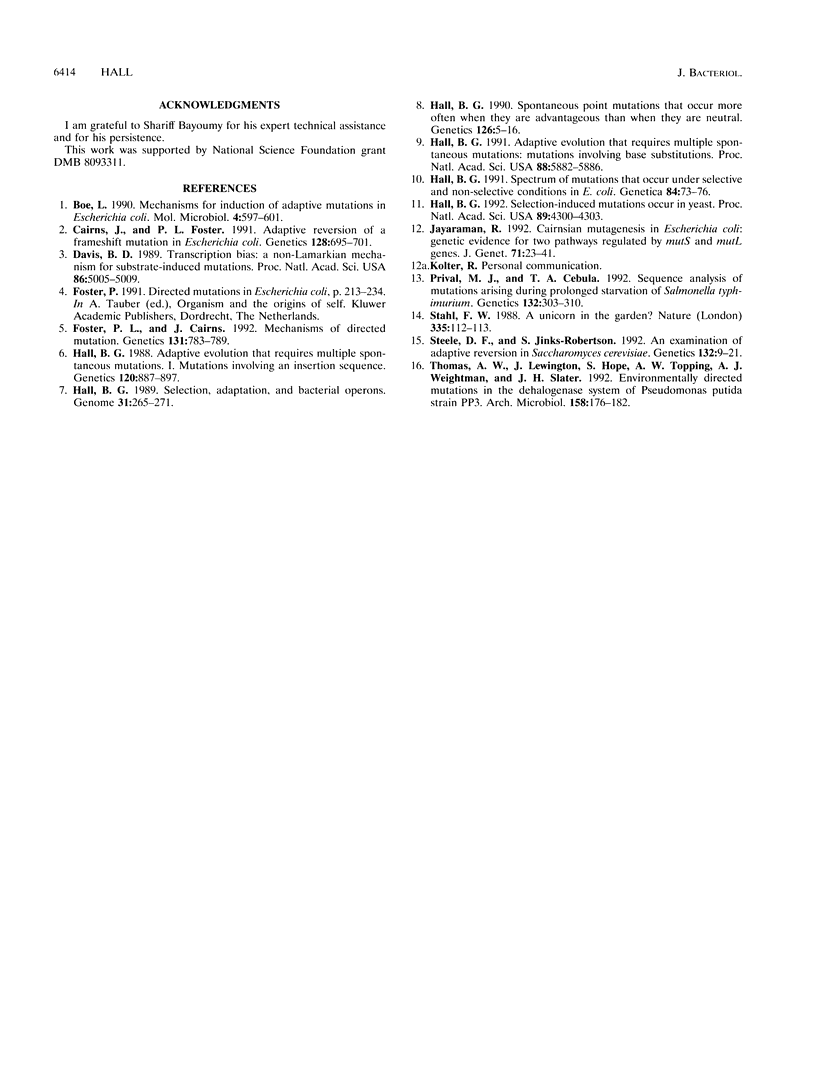Abstract
Selection-induced mutations are nonrandom mutations that occur as specific, direct responses to environmental challenges and that occur more often when they are selectively advantageous than when they are selectively neutral. One of the most puzzling examples of selection-induced mutations involved the simultaneous reversions of two mutations, one in trpA and the other in trpB, at rates that were several orders of magnitude greater than would have been predicted if the two mutations had occurred as independent events (B. G. Hall, Proc. Natl. Acad. Sci. USA 88:5882-5886, 1991). Here I examine the possibility that the double mutations might be accounted for by sequential mutations with intervening growth.
Full text
PDF



Selected References
These references are in PubMed. This may not be the complete list of references from this article.
- Boe L. Mechanism for induction of adaptive mutations in Escherichia coli. Mol Microbiol. 1990 Apr;4(4):597–601. doi: 10.1111/j.1365-2958.1990.tb00628.x. [DOI] [PubMed] [Google Scholar]
- Cairns J., Foster P. L. Adaptive reversion of a frameshift mutation in Escherichia coli. Genetics. 1991 Aug;128(4):695–701. doi: 10.1093/genetics/128.4.695. [DOI] [PMC free article] [PubMed] [Google Scholar]
- Davis B. D. Transcriptional bias: a non-Lamarckian mechanism for substrate-induced mutations. Proc Natl Acad Sci U S A. 1989 Jul;86(13):5005–5009. doi: 10.1073/pnas.86.13.5005. [DOI] [PMC free article] [PubMed] [Google Scholar]
- Foster P. L., Cairns J. Mechanisms of directed mutation. Genetics. 1992 Aug;131(4):783–789. doi: 10.1093/genetics/131.4.783. [DOI] [PMC free article] [PubMed] [Google Scholar]
- Hall B. G. Adaptive evolution that requires multiple spontaneous mutations. I. Mutations involving an insertion sequence. Genetics. 1988 Dec;120(4):887–897. doi: 10.1093/genetics/120.4.887. [DOI] [PMC free article] [PubMed] [Google Scholar]
- Hall B. G. Adaptive evolution that requires multiple spontaneous mutations: mutations involving base substitutions. Proc Natl Acad Sci U S A. 1991 Jul 1;88(13):5882–5886. doi: 10.1073/pnas.88.13.5882. [DOI] [PMC free article] [PubMed] [Google Scholar]
- Hall B. G. Selection, adaptation, and bacterial operons. Genome. 1989;31(1):265–271. doi: 10.1139/g89-044. [DOI] [PubMed] [Google Scholar]
- Hall B. G. Selection-induced mutations occur in yeast. Proc Natl Acad Sci U S A. 1992 May 15;89(10):4300–4303. doi: 10.1073/pnas.89.10.4300. [DOI] [PMC free article] [PubMed] [Google Scholar]
- Hall B. G. Spectrum of mutations that occur under selective and non-selective conditions in E. coli. Genetica. 1991;84(2):73–76. doi: 10.1007/BF00116545. [DOI] [PubMed] [Google Scholar]
- Hall B. G. Spontaneous point mutations that occur more often when advantageous than when neutral. Genetics. 1990 Sep;126(1):5–16. doi: 10.1093/genetics/126.1.5. [DOI] [PMC free article] [PubMed] [Google Scholar]
- Prival M. J., Cebula T. A. Sequence analysis of mutations arising during prolonged starvation of Salmonella typhimurium. Genetics. 1992 Oct;132(2):303–310. doi: 10.1093/genetics/132.2.303. [DOI] [PMC free article] [PubMed] [Google Scholar]
- Stahl F. W. Bacterial genetics. A unicorn in the garden. Nature. 1988 Sep 8;335(6186):112–113. doi: 10.1038/335112a0. [DOI] [PubMed] [Google Scholar]
- Steele D. F., Jinks-Robertson S. An examination of adaptive reversion in Saccharomyces cerevisiae. Genetics. 1992 Sep;132(1):9–21. doi: 10.1093/genetics/132.1.9. [DOI] [PMC free article] [PubMed] [Google Scholar]
- Thomas A. W., Lewington J., Hope S., Topping A. W., Weightman A. J., Slater J. H. Environmentally directed mutations in the dehalogenase system of Pseudomonas putida strain PP3. Arch Microbiol. 1992;158(3):176–182. doi: 10.1007/BF00290813. [DOI] [PubMed] [Google Scholar]


